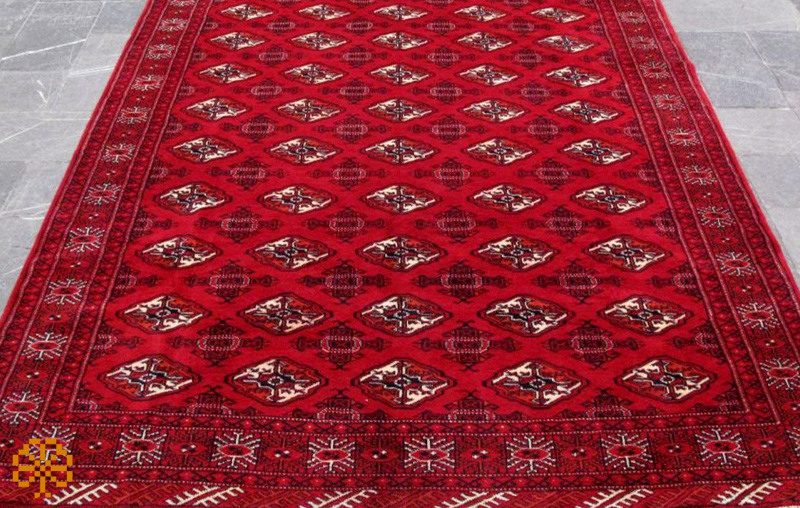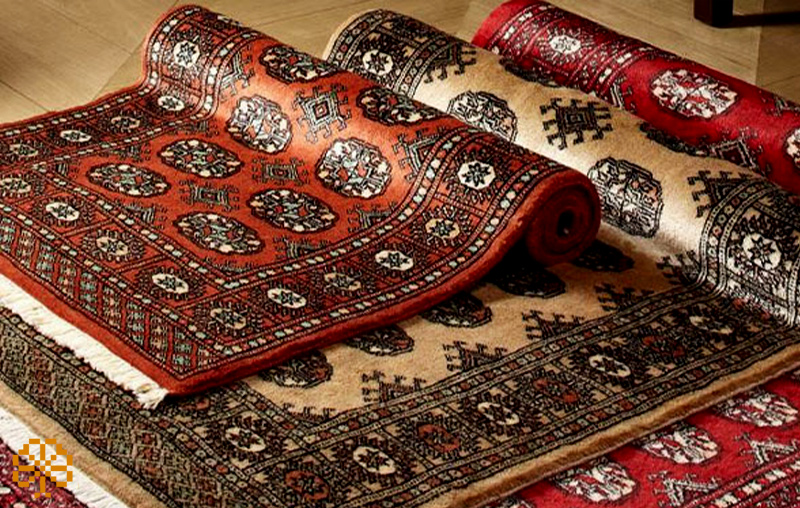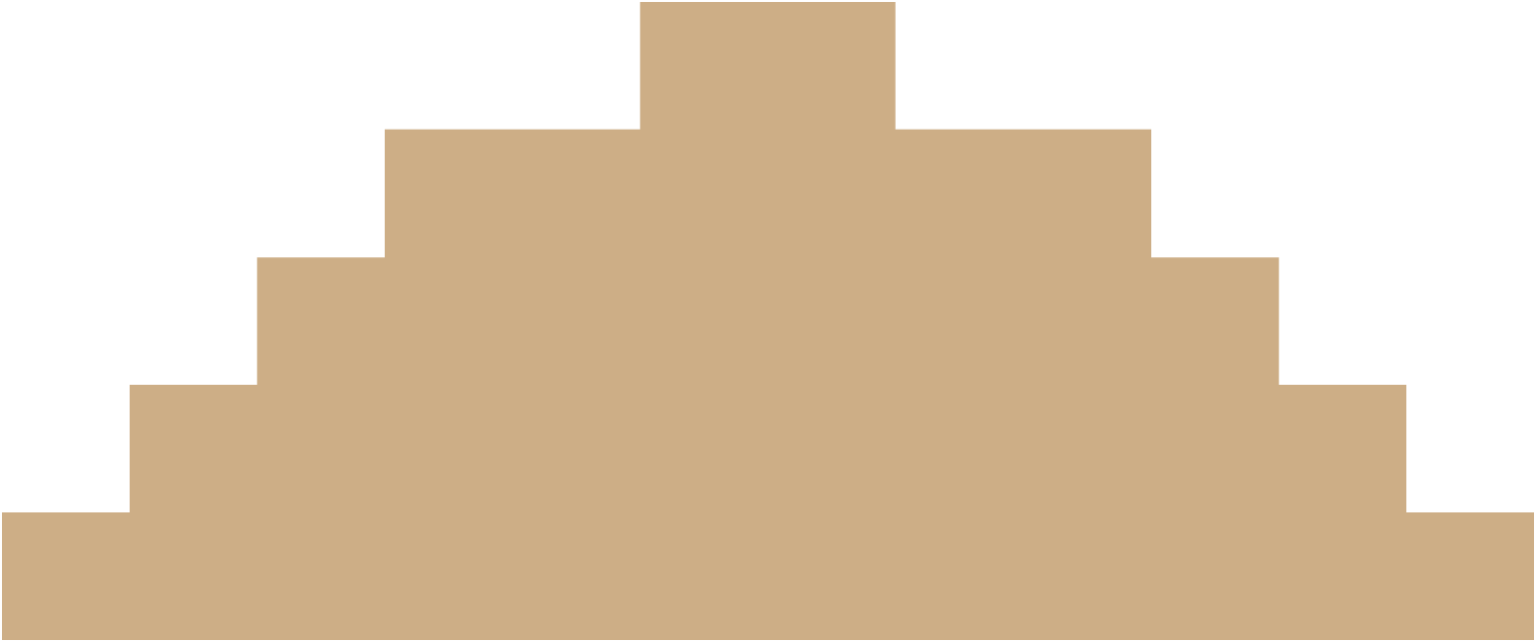Turkmen handmade carpet can definitely be considered one of the most original and oldest examples of Iranian hand-woven carpets, which has its own characteristics and features. A one-line rug, when it can give you information about the life of the people of that area, shows the value and immersion of carpet weaving in the culture of those people, something that is clearly visible in the case of Turkmen carpets.
In this article, we intend to know about the history of Turkmen handmade carpets after a general review of the history of Turkmen handmade carpets, so that if you are going to buy it, you can do so with complete information.
History of Turkmen handmade carpets
The Turkmens are originally a group of Turks from Central Asia who lived as nomads in the eastern Caspian Sea to the Jehyun River for many years. The main place of residence of the Turkmen is Turkmenistan, but some of the Yamut clan and some of the Teke clan live in Iran.
Due to the climatic and mountainous conditions of the Turkmen Sahara region, as well as the nomadic life, carpet weaving became very popular among Turkmen women. In the beginning, this was done only to meet the needs of the Turkmen people, and therefore the artistic and aesthetic aspects were not given much importance.
The oldest Turkmen hand-woven carpet found for the 19th century is nearly 200 years old. Yamut, Arsari and Chadar were among the oldest tribes that started weaving carpets in this region.
The main and common feature among all carpets in this area is the use of red as the background and dominant color. It is interesting to know that among the Turkmen people, silk carpets may be rarely woven, and if they are woven, they keep them for their daughters’ dowry and do not sell them.
Specifications of Turkmen handmade carpets
Each region of carpet weaving in Iran has its own characteristics and everyone chooses their own type according to their taste and needs.
Turkmen handmade carpets are no exception and you can not judge it without checking the specifications, so let’s go over all the things you need to know.
1. Type of Turkmen carpet texture
It can be said that Turkmen region is one of the few areas that still use horizontal wood for carpet weaving among carpet weavers.
Turkmen tent dwellers have to use horizontal poles to fit the rug in the tent, and they act in such a way that after a part of the rug is woven, the weavers sit on the woven part and do the rest.
On the other hand, the existence of tents for the Turkmen people has made them more inclined to look for low-length carpets (6 meters) and rugs and not go for high-end carpets.
A key feature of Turkmen handmade rugs is the use of fleece for warp and weft. Something that is not found in the carpets of many cities and provinces of Iran, and in other places, cotton is mainly used for this purpose.
2. Type of knot, headband and number of Turkmen carpets
In the texture of Turkmen handmade carpets, the use of Turkish knots is used more than anything. Studies show that a group of Turkmen from the Teke tribe who immigrated to Iran after the Russian Revolution, in ancient times and perhaps even today, weave the best Turkmen carpets using Turkish knots in two weaves.
Since the weather conditions in the mountainous areas of this region are a bit cold, for a long time the payments on the carpets of this region have been completely fleshy and fluffy. Because by doing this, the carpet will have more heat.
Shirazeh in Turkmen carpets is of Persian type and most of the carpets are coarse woven with a number between 40 and 50. On the other hand, unlike other parts of Iran, where two types of thin and thick fabrics are used for carpets, in Turkmen hand-woven carpets, only thin fabrics are used, which makes the carpets of this region have more inertia and softness.
Also, additional parts are woven on the top and bottom of Turkmen carpets, which are after the edge of the carpet. These sections are called carpet combs, something that is not common at all in the main centers of carpet weaving in Iran.
3. The color of Turkmen handmade carpets
The color of Turkmen handmade carpets is one of the special features of this carpet. As mentioned in the previous sections, the use of red in Turkmen carpets is very important. But that’s not the whole story; In the past, in addition to red (lacquer), the use of white, black and dark green was also very common.
One of the issues that increase the value of hand-woven rugs is the use of natural and plant dyes, which in addition to improving the quality of the carpet, prevents allergies for family members. This can be especially valuable for families with young children.
Over time, to increase the color variety of Turkmen carpets, in addition to the 4 colors we mentioned, other colors were added over time, the most important of which and how to make them are the following:
Brown: Walnut skin + rhubarb root
Cinnamon: walnut skin + rhubarb + pomegranate skin
Chickpeas: White alum + pomegranate peel
Gray or mouse: black alum + pomegranate peel
Black: Walnut skin + indigo
Olive: Pomegranate peel + hair leaves + walnut peel
Of course, it is necessary to point out that Turkmen carpets use three types of lacquer colors; Dark lacquer, yellowish lacquer and ordinary lacquer and in general the main natural color in the carpets of this region is limited to these 12 colors.
4. Design and layout of Turkmen handmade carpets
The number of designs and patterns of Turkmen carpets is close to 811, each region and each tribe has its own design and it is used more than other designs. That’s why we have introduced some of the most important of these plans with brief descriptions about them:
Mari Gol design: This design can be introduced as the most famous role of Turkmen carpet that is woven by Tekeh tribe. This tribe is the largest producer of Turkmen handmade carpets. In Marie Gol design, a symmetrical octagon is repeated on all carpets and its edges.
Flower frame design: The carpet belongs to the Yamut tribe and the Jafarbayi tribe, in which you can see rhombus-shaped geometric patterns that have shapes similar to a bird called a frame in the sides of the carpet.
Flower mirror design: The role of the flower mirror belongs to the Jafarbayi tribe of the Yamut tribe. In the center of the woven rugs with this design you will see a large regular octagon consisting of smaller octagons.
Tughr Gol design: This design is another role of the Jafarbay tribe of the Yamoot tribe. This design and role is taken from Tughral eagle and in order to thank him for his bravery.
Glen Barmaq Gol Design: This map is taken from the wedding celebrations of the Turkmen people. This design is also called the bride’s finger and symbolizes the caravans of camels carrying the wedding khancheh.
Turkmen carpet buying guide
In general, you need to pay attention to a few important points to buy Turkmen handmade carpets; The first is to check its gender. All wool, all silk, double-sided silk, all fluff, silk and mud are the available models, among which all wool is the cheapest of all carpets, and silk and fluff models are the most expensive type!
The next point is that in general, the main area presented for Turkmen carpets is 1.5, 3 and 6 meters, among which 6-meter carpets are more expensive than other models due to the use of more raw materials.
Now that we are writing this article, the price of a typical 6-meter Turkmen handmade rug is between 15 and 20 million tomans.
The final point for buying Turkmen carpets is that in this region of Iran, both carpets and different types of kilims are woven, and the general price of kilims is lower than handmade carpets due to less workload.
In general, we tried to thoroughly review everything you need to know about Turkmen handmade carpets, but if you have any questions or ambiguities about the content and topics, you can find it in the comments section with Share us.






